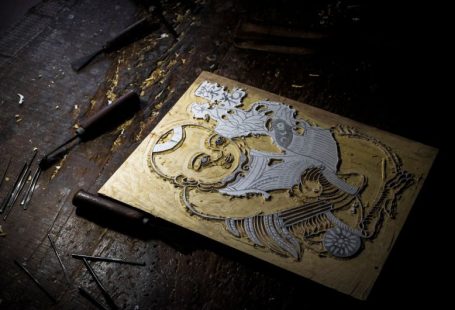Power tools have long been a staple in the world of woodworking and crafting, offering efficiency and precision that can be hard to achieve with traditional handheld tools. However, when it comes to delicate carving work, many artisans are hesitant to rely on power tools, fearing that they may not provide the level of control and finesse required for intricate designs. The question remains: can power tools be used for delicate carving work without sacrificing the quality of the final product?
Precision in Delicate Carving
Delicate carving work requires a high level of precision to ensure that intricate details are captured with finesse. Hand tools such as chisels and gouges have long been the tools of choice for artisans looking to achieve this level of precision, as they allow for greater control and the ability to make minute adjustments as needed. Power tools, on the other hand, are often associated with speed and efficiency rather than precision, leading many to believe that they may not be suitable for delicate carving work.
However, advancements in power tool technology have made it possible to achieve a level of precision that was once thought to be exclusive to handheld tools. Rotary tools, for example, offer a high level of control and allow artisans to work on intricate details with ease. With the right attachments and accessories, rotary tools can be used to carve intricate designs with a level of precision that rivals that of traditional handheld tools.
Choosing the Right Tool for the Job
When it comes to delicate carving work, the key is to choose the right tool for the job. While handheld tools may offer a level of control that is hard to match, power tools can provide efficiency and speed that can be advantageous, especially when working on larger projects or tight deadlines. The key is to find a balance between control and efficiency, using a combination of both handheld and power tools to achieve the desired results.
For delicate carving work that requires precision and finesse, handheld tools such as chisels and gouges are often the tool of choice. These tools allow artisans to work slowly and methodically, making minute adjustments as needed to achieve the desired result. However, power tools can also be used to complement handheld tools, offering efficiency and speed that can help to expedite the carving process without sacrificing quality.
Using Power Tools Safely
One concern that many artisans have when it comes to using power tools for delicate carving work is safety. Power tools, especially those with high-speed rotating blades, can pose a risk of injury if not used properly. It is essential to follow proper safety precautions when using power tools, including wearing appropriate safety gear such as goggles and gloves, and ensuring that the work area is well-ventilated and free of obstructions.
In addition to safety precautions, it is also important to practice using power tools on scrap material before working on the final piece. This allows artisans to familiarize themselves with the tool and its capabilities, helping to ensure a smooth and successful carving process. By taking the time to practice and hone their skills, artisans can use power tools safely and effectively for delicate carving work.
Exploring the Possibilities
Ultimately, the decision to use power tools for delicate carving work comes down to personal preference and the specific requirements of the project at hand. While handheld tools may offer a level of control that is hard to match, power tools can provide efficiency and speed that can be advantageous in certain situations. By exploring the possibilities that power tools offer and finding ways to integrate them into their carving process, artisans can expand their capabilities and create intricate designs with precision and finesse.





